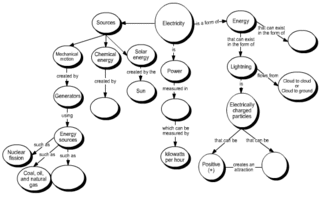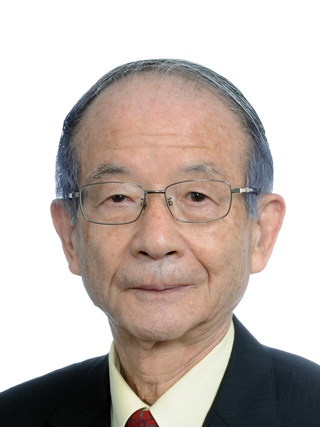Related Research Articles

Knowledge management (KM) is the collection of methods relating to creating, sharing, using and managing the knowledge and information of an organization. It refers to a multidisciplinary approach to achieve organizational objectives by making the best use of knowledge.
Organizational learning is the process of creating, retaining, and transferring knowledge within an organization. An organization improves over time as it gains experience. From this experience, it is able to create knowledge. This knowledge is broad, covering any topic that could better an organization. Examples may include ways to increase production efficiency or to develop beneficial investor relations. Knowledge is created at four different units: individual, group, organizational, and inter organizational.

Knowledge transfer refers to transferring an awareness of facts or practical skills from one entity to another. The particular profile of transfer processes activated for a given situation depends on (a) the type of knowledge to be transferred and how it is represented and (b) the processing demands of the transfer task. From this perspective, knowledge transfer in humans encompasses an expertise from different disciplines: psychology, cognitive anthropology, anthropology of knowledge, communication studies and media ecology.
Tacit knowledge or implicit knowledge—as opposed to formalized, codified or explicit knowledge—is knowledge that is difficult to express or extract; therefore it is more difficult to transfer to others by means of writing it down or verbalizing it. This can include motor skills, personal wisdom, experience, insight, and intuition.
A modeling language is any artificial language that can be used to express data, information or knowledge or systems in a structure that is defined by a consistent set of rules. The rules are used for interpretation of the meaning of components in the structure of a programming language.
Activity theory is an umbrella term for a line of eclectic social-sciences theories and research with its roots in the Soviet psychological activity theory pioneered by Sergei Rubinstein in the 1930s. It was later advocated for and popularized by Alexei Leont'ev. Some of the traces of the theory in its inception can also be found in a few works of Lev Vygotsky. These scholars sought to understand human activities as systemic and socially situated phenomena and to go beyond paradigms of reflexology and classical conditioning, psychoanalysis and behaviorism. It became one of the major psychological approaches in the former USSR, being widely used in both theoretical and applied psychology, and in education, professional training, ergonomics, social psychology and work psychology.

A concept map or conceptual diagram is a diagram that depicts suggested relationships between concepts. Concept maps may be used by instructional designers, engineers, technical writers, and others to organize and structure knowledge.
Knowledge workers are workers whose main capital is knowledge. Examples include ICT Professionals, physicians, pharmacists, architects, engineers, scientists, design thinkers, public accountants, lawyers, editors, and academics, whose job is to "think for a living".
Personal knowledge management (PKM) is a process of collecting information that a person uses to gather, classify, store, search, retrieve and share knowledge in their daily activities and the way in which these processes support work activities. It is a response to the idea that knowledge workers need to be responsible for their own growth and learning. It is a bottom-up approach to knowledge management (KM).
The knowledge-based theory of the firm, or knowledge-based view (KBV), considers knowledge as an essentially important, scarce, and valuable resource in a firm. According to the knowledge-based theory of the firm, the possession of knowledge-based resources, known as intellectual capital, is essential in dynamic business environments. These resources contribute to lower costs, foster innovation and creativity, improve efficiencies, and deliver customer benefits. Collectively, they are considered key drivers of overall organizational performance. The proponents of the theory argue, that because knowledge-based resources are usually complex and difficult to imitate, different sources of knowledge and intellectual capital can be seen as the main sources for a sustainable competitive advantage.
A community of practice (CoP) is a group of people who "share a concern or a passion for something they do and learn how to do it better as they interact regularly". The concept was first proposed by cognitive anthropologist Jean Lave and educational theorist Etienne Wenger in their 1991 book Situated Learning. Wenger then significantly expanded on the concept in his 1998 book Communities of Practice.
Knowledge sharing is an activity through which knowledge is exchanged among people, friends, peers, families, communities, or within or between organizations. It bridges the individual and organizational knowledge, improving the absorptive and innovation capacity and thus leading to sustained competitive advantage of companies as well as individuals. Knowledge sharing is part of the knowledge management process.

Ikujiro Nonaka is a Japanese organizational theorist and Professor Emeritus at the Graduate School of International Corporate Strategy of the Hitotsubashi University, best known for his study of knowledge management.
The SECI model of knowledge dimensions is a model of knowledge creation that explains how tacit and explicit knowledge are converted into organizational knowledge. The aim is to change the explicit knowledge of the model back into the tacit knowledge of the employees. In this case, employees' tacit knowledge can be kept in the organization. When employees express their thoughts and ideas openly and share their best working practices, it can lead to new innovations and help to make operations more efficient.
Text and conversation is a theory in the field of organizational communication illustrating how communication makes up an organization. In the theory's simplest explanation, an organization is created and defined by communication. Communication "is" the organization and the organization exists because communication takes place. The theory is built on the notion, an organization is not seen as a physical unit holding communication. Text and conversation theory puts communication processes at the heart of organizational communication and postulates, an organization doesn't contain communication as a "causal influence", but is formed by the communication within. This theory is not intended for direct application, but rather to explain how communication exists. The theory provides a framework for better understanding organizational communication.
In social science research and organizational psychology, boundary spanning is a term to describe individuals within an innovation system who have, or adopt, the role of linking the organization's internal networks with external sources of information. While the term was coined by Tushman, the concept was being developed by social scientists from the late 1950s onwards. Most of the early work was conducted in large American corporations with well-established R&D laboratories. The term has since been used in relation to more general innovation networks.
Cognitive assets are tangible and intangible organizational assets that constitute sources of the cognition that is necessary for action coordination. These assets allow for the integrity and efficiency of the multiple conversions of individual knowledge into organizational knowledge.

Hirotaka Takeuchi is a professor of management practice in the Strategy Unit at Harvard Business School. He co-authored The New New Product Development Game which influenced the development of the Scrum framework.

Polanyi's paradox, named in honour of the British-Hungarian philosopher Michael Polanyi, is the theory that human knowledge of how the world functions and of our own capability are, to a large extent, beyond our explicit understanding. The theory was articulated by Michael Polanyi in his book The Tacit Dimension in 1966, and economist David Autor gave it a name in his 2014 research paper "Polanyi's Paradox and the Shape of Employment Growth".
Knowledge equity is a social science concept referring to social change concerning expanding what is valued as knowledge and how communities may have been excluded from this discourse through imbalanced structures of power and privilege.
References
- ↑ L. C. Jain, Virtual Environments for Teaching and Learning, World Scientific, 2002, p. 179.
- ↑ Helie, Sebastien; Sun, Ron (2010). "Incubation, Insight, and Creative Problem Solving: A Unified Theory and a Connectionist Model" (PDF). Psychological Review. 117 (3): 994–1024. doi:10.1037/a0019532. PMID 20658861. Archived from the original (PDF) on 2019-07-12. Retrieved 2019-09-24.
- ↑ Nonaka, Ikujiro; Toyama, Ryoko; Konno, Noboru (2000). "SECI, Ba and Leadership: a Unified Model of Dynamic Knowledge Creation". Long Range Planning. 33 (1): 5–34. doi:10.1016/s0024-6301(99)00115-6. ISSN 0024-6301.
- ↑ Kogut, Bruce; Zander, Udo (1992). "Knowledge of the Firm, Combinative Capabilities, and the Replication of Technology". Organization Science. 3 (3): 383–397. doi:10.1287/orsc.3.3.383. ISSN 1047-7039.
- 1 2 Ikujiro, Nonaka (2007). "The Knowledge-Creating Company". Harvard Business Review.
- ↑ "Systemization of Knowledge (SoK) Papers". www.jsys.org. Retrieved 2023-02-23.